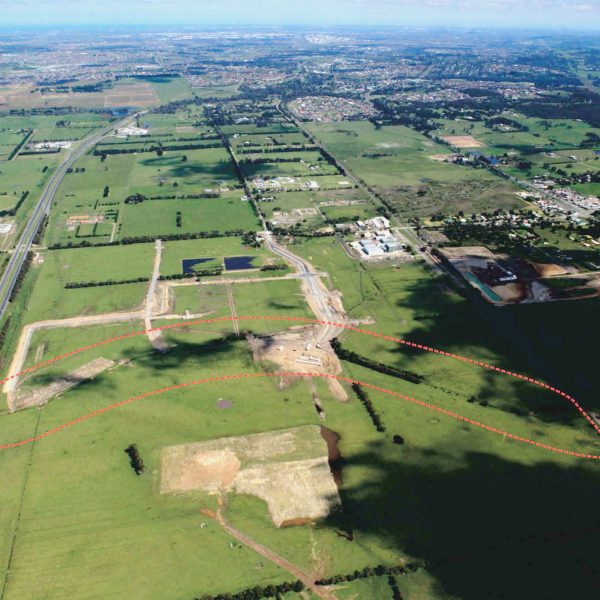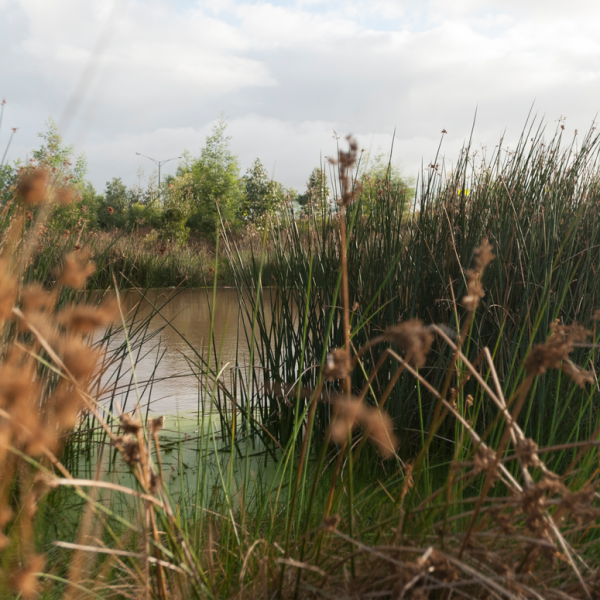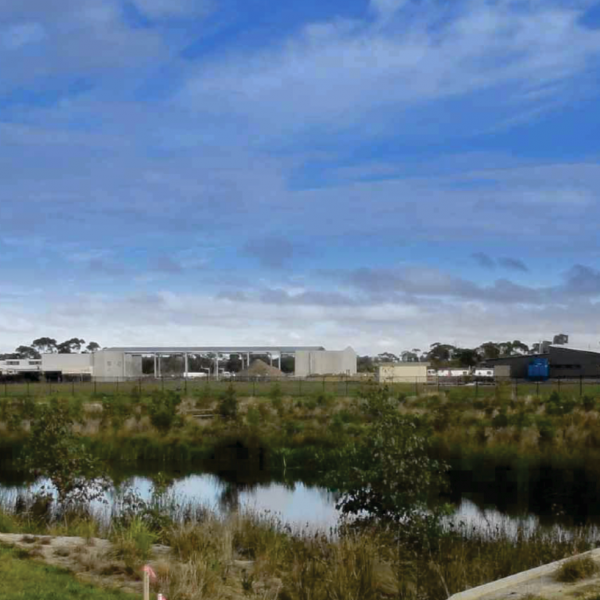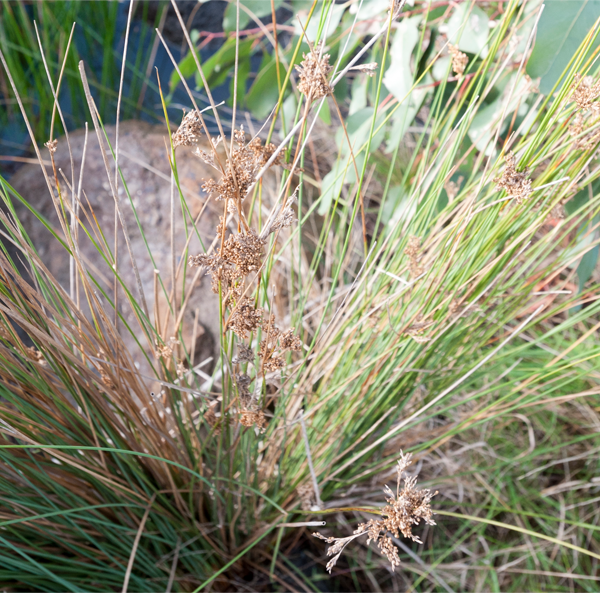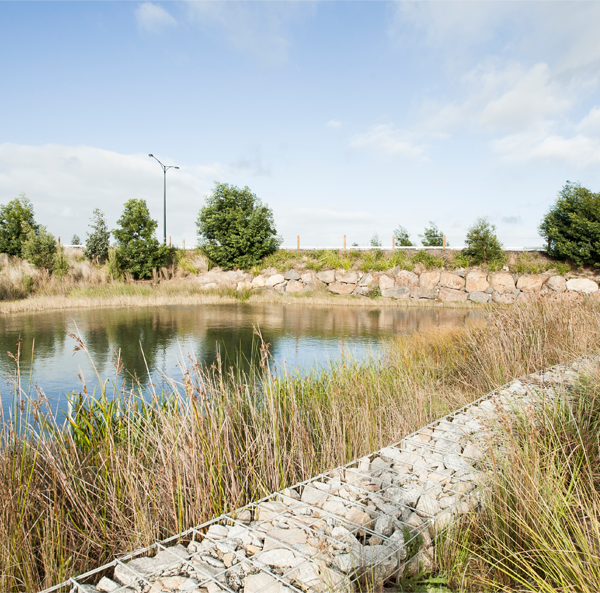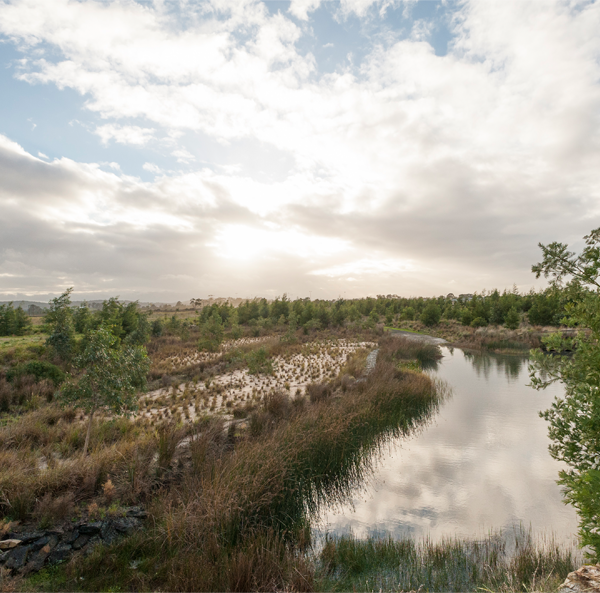Contact
Insight:
The multi-functional corridors throughout the development provided ecological and social values, bringing communities closer to nature
The drivers
Ambition combined with opportunity drove innovation
- The presence of growling grass frogs on site drove a requirement for riparian habitat protection:
This created an opportunity to design an integrated landscape that also managed water. - Places Victoria saw an opportunity in the Officer site:
To create a new benchmark in outer-urban sustainability. - Researchers collaborated with other stakeholders from the start:
This led to the identification of opportunities to explore new options for stormwater management on a greenfield site.
The innovations
A new model for waterway corridors and urban stormwater management
- Surface conveyance of stormwater:
The concept of branched urban tributaries was explored in the site masterplan with the aim of addressing challenges associated with piped stormwater infrastructure in flat landscapes by instead keeping stormwater flow on the surface. - Bio-sponges were constructed to manage stormwater runoff: These densely planted areas within the waterway corridor were trialled to promote ponding of stormwater to maximise evapotranspiration and create slow, filtered release of the remaining water into the creek, mimicking the natural hydrologic processes.
- An ecologically rich waterway corridor was created:
Gum Scrub Creek, which was formerly an agricultural drain was transformed into an award winning multi-functional urban waterway and biodiversity corridor and significant natural asset for the local community.
The method
Emerging research put into practice
The project team included researchers from the Cities as Water Supply Catchments (CaWSC) and CRC for Water Sensitive Cities teams during its development. The collaboration between researchers and industry drove innovation.
Learn more about the collaboration
The lessons
- The creation of a common vision is essential:
A clear vision developed between all key stakeholders at the start of a project creates a sense of ownership, drives commitment and facilitates sharing of resources and responsibilities. - Trust must underpin the relationship between stakeholders:
By building and maintaining strong relationships within a local network, an environment is created where innovation and more likely - and more successful. - The project successfully demonstrated the delivery of various techniques:
That can be used to slow and treat stormwater while promoting infiltration and evapotranspiration to help to replicate natural flow patterns. Delivered techniques included lateral drainage corridors, bio-sponges and constructed creek systems. - Evidence can drive policy changes:
The creation of an ecologically rich riparian corridor at Officer site provided valuable evidence to support a change in policy – requiring a 100m riparian around waterways within new greenfield development areas. - Benefits of integrated masterplanning outweighed the costs:
The multi-functional corridors throughout the development provided ecological and social values, bringing communities closer to nature. - Local use of stormwater for potable supply needs further research:
The use of treated stormwater to supplement potable supply was not found to be viable at this scale on a cost basis, however further research is required to understand feasibility thresholds and to better evaluate ecological and social benefits of stormwater harvesting.
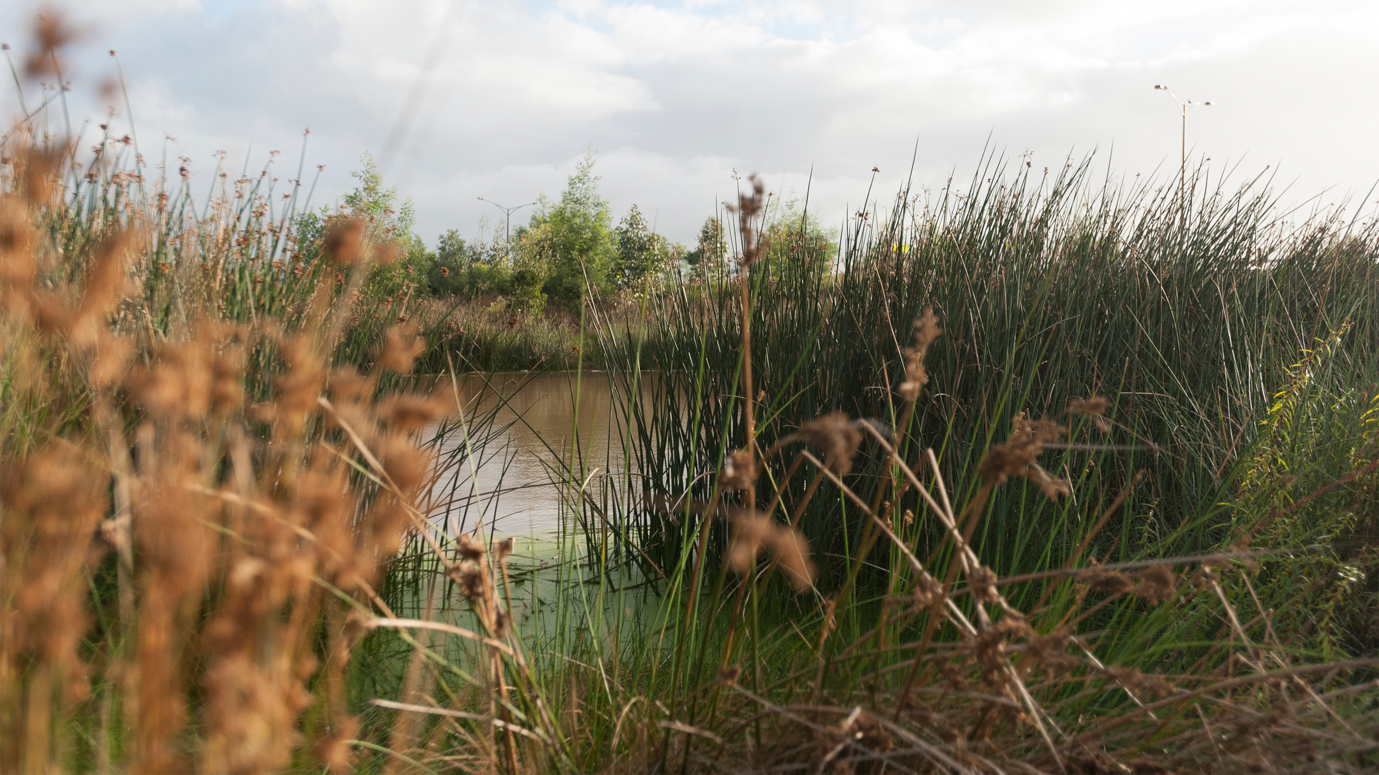
The outcomes
 Cities providing ecosystem services
Cities providing ecosystem services

- 10 hectares of new constructed creek systems created, replacing an old agricultural drain
- Ecologically rich waterway corridors included. Led to mandatory 100m waterway corridors in growth areas in Melbourne.
- Landscape design to support increased amenity and recreation value
 Cities as water supply catchments
Cities as water supply catchments

- Increased groundwater recharge by holding water in the landscape in bio-sponges
- Stormwater quality improved through use of bio-sponges and detention basins
- Improved flow regime by slowing stormwater and promoting evaporation and infiltration
 Cities comprising water sensitive communities
Cities comprising water sensitive communities

- A new model for outer-urban development focussed on increased exposure to nature
- Underpinned by long-term collaboration and shared commitment by stakeholders
- Water is a key element in planning and urban design, by creating lateral green corridors to keep water on the surface
Project stats
Location
Officer, Victoria, Australia
Dates
2009 – 2016
Participants
Topics
Contact
The outcomes
 Cities providing ecosystem services
Cities providing ecosystem services

- 10 hectares of new constructed creek systems created, replacing an old agricultural drain
- Ecologically rich waterway corridors included. Led to mandatory 100m waterway corridors in growth areas in Melbourne.
- Landscape design to support increased amenity and recreation value
 Cities as water supply catchments
Cities as water supply catchments

- Increased groundwater recharge by holding water in the landscape in bio-sponges
- Stormwater quality improved through use of bio-sponges and detention basins
- Improved flow regime by slowing stormwater and promoting evaporation and infiltration
 Cities comprising water sensitive communities
Cities comprising water sensitive communities

- A new model for outer-urban development focussed on increased exposure to nature
- Underpinned by long-term collaboration and shared commitment by stakeholders
- Water is a key element in planning and urban design, by creating lateral green corridors to keep water on the surface
Interested in this solution?
We partner with small and large companies, government and industry in Australia and around the world.




